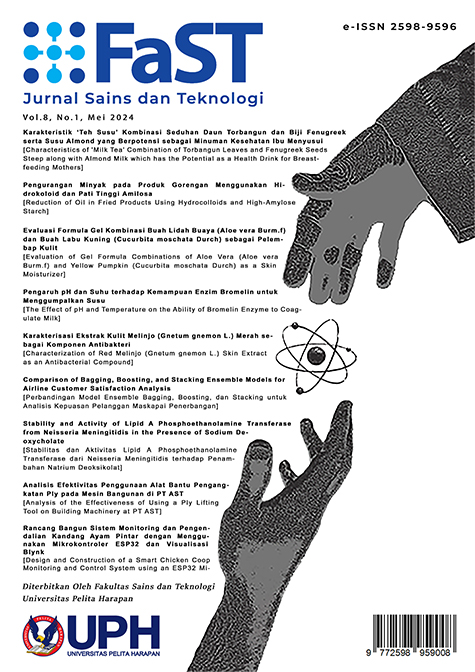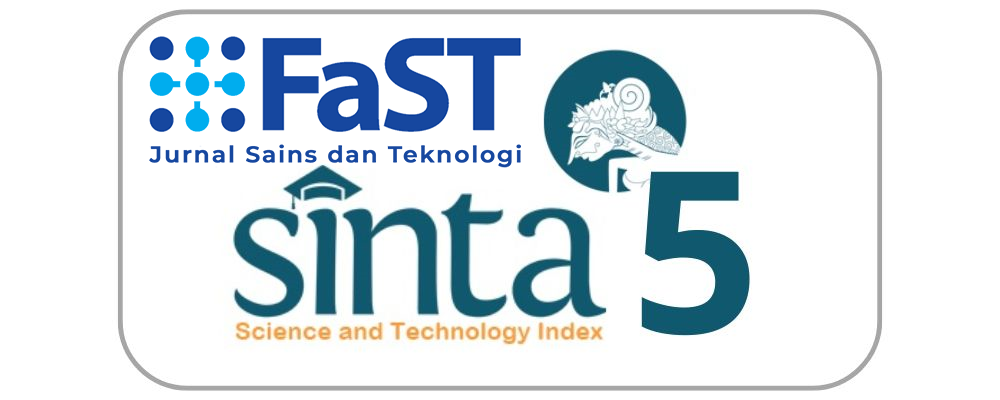ANALISIS EFEKTIVITAS PENGGUNAAN ALAT BANTU PENGANGKATAN PLY PADA MESIN BUILDING PT AST [ANALYSIS OF THE EFFECTIVENESS OF USING A PLY LIFTING TOOL ON BUILDING MACHINERY AT PT AST]
DOI:
https://doi.org/10.19166/jstfast.v8i1.8307Keywords:
lifting index, ply lifting tool, productivity, REBA, rapid entire body assessmentAbstract
PT AST is one of the leading tire manufacturing industries in Indonesia. In the building department, there are material replacement activities carried out manually by lifting heavy rolls of ply (material) to the machine which can pose a risk of injury to the operator. The engineering department has made a ply lifting tool, and tested it in May 2023, but it was not used in the production process. Therefore this research was conducted to evaluate the effectiveness of this tool based on the operator productivity, standard time, and the level of risk of injury generated before and after use. Rapid Entire Body Assessment method, and Lifting Index were used to evaluate the injury risk. The paired t-test results showed that the worker productivity after using the tool (144 pcs/shift) was not significantly different from the worker productivity before using the tool (143,6 pcs/shift). The standard time of the material replacement process after using the tool was 122.15 seconds, longer than the replacement time without using the tool, which was 74.37 seconds. However, the longer replacement time did not significantly reduce overall worker productivity, because the proportion of this replacement time was only 2.3% of the total working time in one shift. The tool was able to reduce the level of injury risk based on REBA score from very high risk (11 points), to medium risk (7 points), and successfully eliminated the risk of back injury based on the lifting index value which dropped from 2.56 (high risk) to 0 (no risk). In conclusion, the ply lifting tool was functionally effective because it can reduce the potential injury to the operator.
Bahasa Indonesia Abstract:
PT AST merupakan salah satu industri manufaktur ban terkemuka di Indonesia. Pada departemen building, terdapat kegiatan penggantian material yang dilakukan secara manual dengan mengangkat gulungan ply (material) yang berat ke mesin yang dapat menimbulkan risiko cedera pada operator. Departemen engineering telah membuat alat bantu pengangkat ply, dan mengujicobakannya pada bulan Mei 2023, namun alat bantu tersebut tidak digunakan lebih lanjut dalam proses produksi. Oleh karena itu, penelitian ini dilakukan untuk mengevaluasi efektivitas alat bantu tersebut berdasarkan produktivitas operator, waktu baku, dan tingkat risiko cedera yang ditimbulkan sebelum dan sesudah alat bantu digunakan. Metode Rapid Entire Body Assessment dan Lifting Index digunakan untuk mengevaluasi tingkat risiko cedera. Hasil uji-t berpasangan menunjukkan bahwa produktivitas pekerja setelah menggunakan alat bantu (144 pcs/shift) tidak berbeda secara signifikan dengan produktivitas pekerja sebelum menggunakan alat bantu (143,6 pcs/shift). Waktu baku proses penggantian material setelah menggunakan alat bantu adalah 122,15 detik, lebih lama dibandingkan dengan waktu penggantian tanpa menggunakan alat bantu, yaitu 74,37 detik. Namun waktu penggantian yang lebih lama tersebut tidak menurunkan produktivitas pekerja secara keseluruhan secara signifikan, karena proporsi waktu penggantian ini hanya sebesar 2,3% dari total waktu kerja dalam satu shift. Alat bantu ini mampu menurunkan tingkat risiko cedera berdasarkan skor REBA dari risiko sangat tinggi (11 poin), menjadi risiko sedang (7 poin), dan berhasil mengeliminasi risiko cedera punggung berdasarkan nilai lifting index yang turun dari 2.56 (risiko tinggi) menjadi 0 (tidak berisiko). Kesimpulannya, alat bantu pengangkat ply efektif secara fungsional karena dapat mengurangi potensi cedera pada operator.
References
Freivalds, A., & Niebel, B. (2014). Niebel’s methods, standards, & work design. McGraw Hill.
Gunawan, R., & Wahyudin, W. (2022). Usulan penentuan waktu baku metode jam henti pada proses pengemasan produk kangkung akar 250 gr. Jurnal Teknik Industri, 8(2), 223-230. https://doi.org/10.24014/jti.v8i2.19631
Hignett, S., & McAtamney, L. (2000). Rapid entire body assessment (REBA). Applied Ergonomics, 31, 201-205. https://doi.org/10.1016/S0003-6870(99)00039-3
Kusuma, T. Y. T., & Firdaus, M. F. S. (2019). Penentuan jumlah tenaga kerja optimal untuk peningkatan produktifitas kerja (studi kasus: UD. Rekayasa Wangdi W). Integrated Lab Journal, 7(2), 26-36.
Madani, D. A., & Dababneh, A. (2016). Rapid entire body assessment: A literature review. American Journal of Engineering and Applied Sciences. 9(1), 107-118. https://doi.org/10.3844/ajeassp.2016.107.118
Marras, W. S., & Karwowski, W. (2006). Fundamentals and assessment tools for occupational ergonomics. Taylor & Francis. https://doi.org/10.1201/9781420003635
Septianto, M., & Herwanto, D. (2022). Penentuan target produksi paint roller berdasarkan perhitungan waktu baku menggunakan metode stopwatch time study. Journal Industrial Services, 7(2), 206-210. https://doi.org/10.36055/jiss.v7i2.12756
Sujarwadi, A. (2013). Aplikasi NIOSH lifting equation pada simulasi manual lifting task air minum kemasan galon. Proceeding of the 7th National Industrial Engineering Conference (pp.62-68). Universitas Surabaya.
Waters, T. R., Putz-Anderson,V., & Garg, A. (2021). Applications manual for revised NIOSH lifting equation. DHHS (NIOSH) Publication.
Downloads
Published
Issue
Section
License
“Authors who publish with this journal agree to the following terms:
1) Authors retain copyright and grant the journal right of first publication with the work simultaneously licensed under a Creative Commons Attribution License (CC-BY-SA 4.0) that allows others to share the work with an acknowledgement of the work's authorship and initial publication in this journal.
2) Authors are able to enter into separate, additional contractual arrangements for the non-exclusive distribution of the journal's published version of the work (e.g., post it to an institutional repository or publish it in a book), with an acknowledgement of its initial publication in this journal.
3) Authors are permitted and encouraged to post their work online (e.g., in institutional repositories or on their website). The final published PDF should be used and bibliographic details that credit the publication in this journal should be included.”



